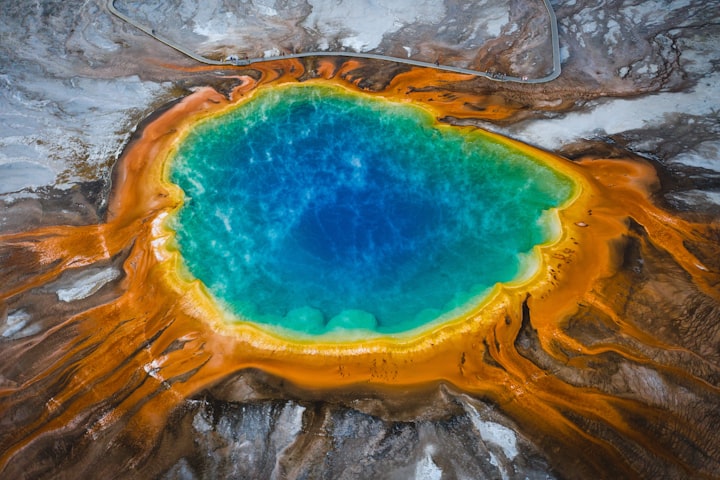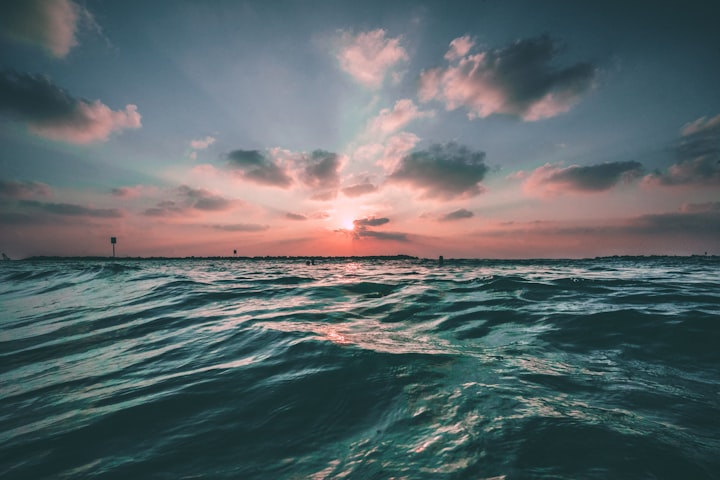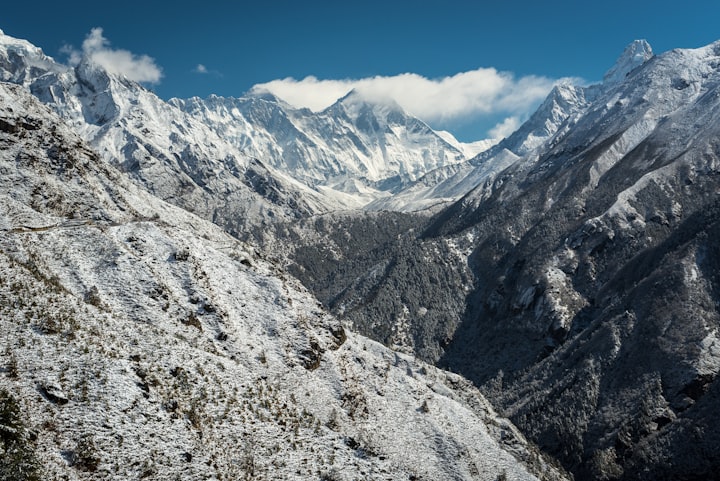Preparing for the Worst: What Will Happens When Yellowstone Erupts
A Natural Disaster Like No Other: Yellowstone's Potential Eruption

Although the potential impact of a super-eruption from the supervolcano beneath Yellowstone National Park is immense, it's crucial to acknowledge that the likelihood of such an event is extremely low. In fact, the Yellowstone supervolcano has only experienced three enormous eruptions in its history, the last of which occurred 664,000 years ago. There is no evidence to suggest that another "super-eruption" is due anytime soon, and it's even possible that Yellowstone may never have an eruption that large again.
While it's tempting to indulge in apocalyptic fascination about the potential consequences of a super-eruption, it's important to remember that smaller eruptions are much more common and even those are rare. In fact, the Yellowstone Volcano Observatory, led by Scientist-In-Charge Jacob Lowenstern, reports that smaller eruptions are the norm.
Lowenstern cautions against taking the worst-case scenario described in a 2014 scientific paper as a prediction of what might happen. Even if Yellowstone were to erupt again, it's unlikely that it would result in that level of destruction. The study's findings suggested that ash from a super-eruption could damage buildings, crops, and power plants, covering parts of Wyoming, Montana, Idaho, Colorado, and the Midwest with up to three feet of volcanic ash. However, Lowenstern stresses that it's more probable that Yellowstone will have smaller eruptions rather than a catastrophic one.
Although the potential danger of a Yellowstone super-eruption is certainly worth studying and understanding, it's important to approach the subject with a level head and an understanding of the scientific data. While the idea of a supervolcano eruption can be frightening, the evidence suggests that such a catastrophe is unlikely to happen anytime soon.
The Yellowstone Supervolcano: What Lurks Beneath the National Park
Beneath the stunning landscape of Yellowstone National Park, there is a hidden danger that lurks below the earth's surface. A vast reservoir of hot magma, about five miles deep, sits beneath the park, fed by a massive plume of molten rock that rises up from hundreds of miles below. This incredible heat is responsible for many of the park's famous geysers, hot springs, and other geothermal features that attract millions of visitors each year.
The underground magma chamber, also known as a caldera, periodically rises and falls as magma rises up and cools. While the vast majority of Yellowstone's eruptions have been relatively small lava flows, on rare occasions throughout history, the magma chamber has experienced catastrophic "super-eruptions." These massive eruptions measure magnitude 8 or more on the Volcano Explosivity Index and involve the ejection of at least 1,000 cubic kilometers (or 240 cubic miles) of material. That's enough to bury the state of Texas five feet deep.
Yellowstone has had three of these super-eruptions in its history, and they occurred approximately 2.1 million years ago, 1.3 million years ago, and 664,000 years ago, respectively. The most recent one, known as the Yellowstone Lava Creek eruption, ejected so much material that it left a 34-mile-by-50-mile depression in the ground, which is visible today as the Yellowstone Caldera.
Despite the enormous destructive power of these super-eruptions, it's important to note that they are rare events. In fact, the vast majority of eruptions at Yellowstone are relatively small and harmless. However, due to the remote possibility of another super-eruption occurring, Yellowstone remains an object of intense fascination and concern for many people.
It's worth noting that Yellowstone is not the only supervolcano out there. Geologists have found evidence of at least 47 super-eruptions in Earth's history. The most recent one occurred in New Zealand's Lake Taupo approximately 26,000 years ago. However, perhaps the most dramatic super-eruption in history was the Toba eruption, which occurred 74,000 years ago. This massive eruption, caused by shifting tectonic plates, triggered a dramatic 6- to 10-year global winter and may have nearly wiped out the nascent human race.
Overall, while the possibility of another catastrophic super-eruption at Yellowstone is a remote one, it's important to continue studying and monitoring the volcano to better understand the potential risks and to be prepared for any future events.

The Fiery Fury of Yellowstone: Exploring the Apocalyptic Consequences of a Supervolcano Eruption
The Yellowstone supervolcano is one of the most closely watched geological features on Earth. Located beneath Yellowstone National Park in the United States, this volcano is capable of unleashing an eruption thousands of times more powerful than the biggest eruptions we are used to.
But what would happen if the Yellowstone supervolcano were to erupt again? What would it look like, and how would it impact the surrounding area?
First, it's important to understand the different types of eruptions that can occur. The vast majority of Yellowstone eruptions are small, with the last occurring at Pitchstone Plateau some 70,000 years ago. However, there is a remote possibility of a catastrophic "super-eruption" that could occur.
A super-eruption is anything that measures magnitude 8 or more on the Volcano Explosivity Index, in which at least 1,000 cubic kilometers (or 240 cubic miles) of material gets ejected. Yellowstone has had three of these really massive eruptions in its history, occurring 2.1 million years ago, 1.3 million years ago, and 664,000 years ago.
So what would a Yellowstone super-eruption look like? According to a team of scientists who published a paper in Geochemistry, Geophysics, Geosystems exploring this very question, the eruption would likely be a catastrophic event.
The study found that the Yellowstone supervolcano is capable of spewing ash for thousands of miles across the United States, damaging buildings, smothering crops, and shutting down power plants. The ash, a mix of splintered rock and glass, could blanket states like Wyoming, Montana, Idaho, and Colorado in three feet of harmful volcanic ash.
That much ash could kill plants and animals, crush roofs, and short all sorts of electrical equipment. It would be a disaster on an unprecedented scale, the likes of which modern civilization has never seen.
However, it's important to note that the odds of a super-eruption occurring anytime soon are thankfully pretty low. Despite what you sometimes hear in the press, there's no indication that we're due for another "super-eruption." In fact, it's even possible that Yellowstone might never have an eruption that large again.
Even so, the Yellowstone supervolcano remains an endless source of apocalyptic fascination – and for good reason. The sheer power and magnitude of a super-eruption are difficult to fathom, and the consequences would be felt far beyond the immediate vicinity of the volcano.
In conclusion, while a Yellowstone super-eruption would be a horrific event, it's important to remember that the odds of such an event occurring anytime soon are thankfully pretty low. However, we must remain vigilant and continue to monitor the Yellowstone supervolcano closely, in order to better understand the risks and potential impacts of any future eruptions.

What are The Odds of a Yellowstone super-eruption?
The possibility of a Yellowstone super-eruption is a topic of interest and concern for many people, especially those who live in the vicinity of the Yellowstone National Park. A super-eruption would be a catastrophic event that could potentially have devastating effects on the environment and human life. So, what are the odds of a Yellowstone super-eruption, and should we be worried?
First, let's define what a super-eruption is. A super-eruption is a volcanic eruption that ejects more than 1,000 cubic kilometers (240 cubic miles) of material, making it thousands of times more powerful than even the biggest eruptions we're used to. Yellowstone has had three super-eruptions in its history, with the most recent occurring 664,000 years ago. These eruptions left a massive depression in the ground, known as the Yellowstone Caldera, which is roughly 34 miles by 50 miles in size.
The odds of a Yellowstone super-eruption happening in our lifetime are extremely low. According to the United States Geological Survey (USGS), the chances of a super-eruption occurring in Yellowstone in any given year are about 1 in 730,000 or 0.00014%. To put that in perspective, the odds of getting struck by lightning in any given year are about 1 in 500,000 or 0.0002%. So, you are more likely to get struck by lightning than to witness a Yellowstone super-eruption.
However, it's important to note that while the odds are low, a Yellowstone super-eruption would have catastrophic consequences. The USGS estimates that a super-eruption would cover most of the United States in ash, potentially causing widespread crop failures and affecting air travel. The ash could also cause respiratory problems and other health issues for people in the affected areas.
Despite the potential risks, scientists are monitoring Yellowstone closely and have systems in place to detect any signs of an impending eruption. The USGS has a network of sensors and monitors in the park that measure everything from earthquakes to ground deformation to gas emissions. These measurements allow scientists to track any changes in the activity of the volcano and give them an early warning if an eruption is likely to occur.
In conclusion, the odds of a Yellowstone super-eruption happening in our lifetime are extremely low, but the consequences would be catastrophic. However, scientists are closely monitoring the volcano and have systems in place to detect any signs of an impending eruption. While we can't predict when or if a super-eruption will occur, we can take comfort in knowing that we are doing everything we can to prepare for it.
About the Creator
Alfredo Moreno
Love writing about anything that comes in mind, just love to write.





Comments
There are no comments for this story
Be the first to respond and start the conversation.